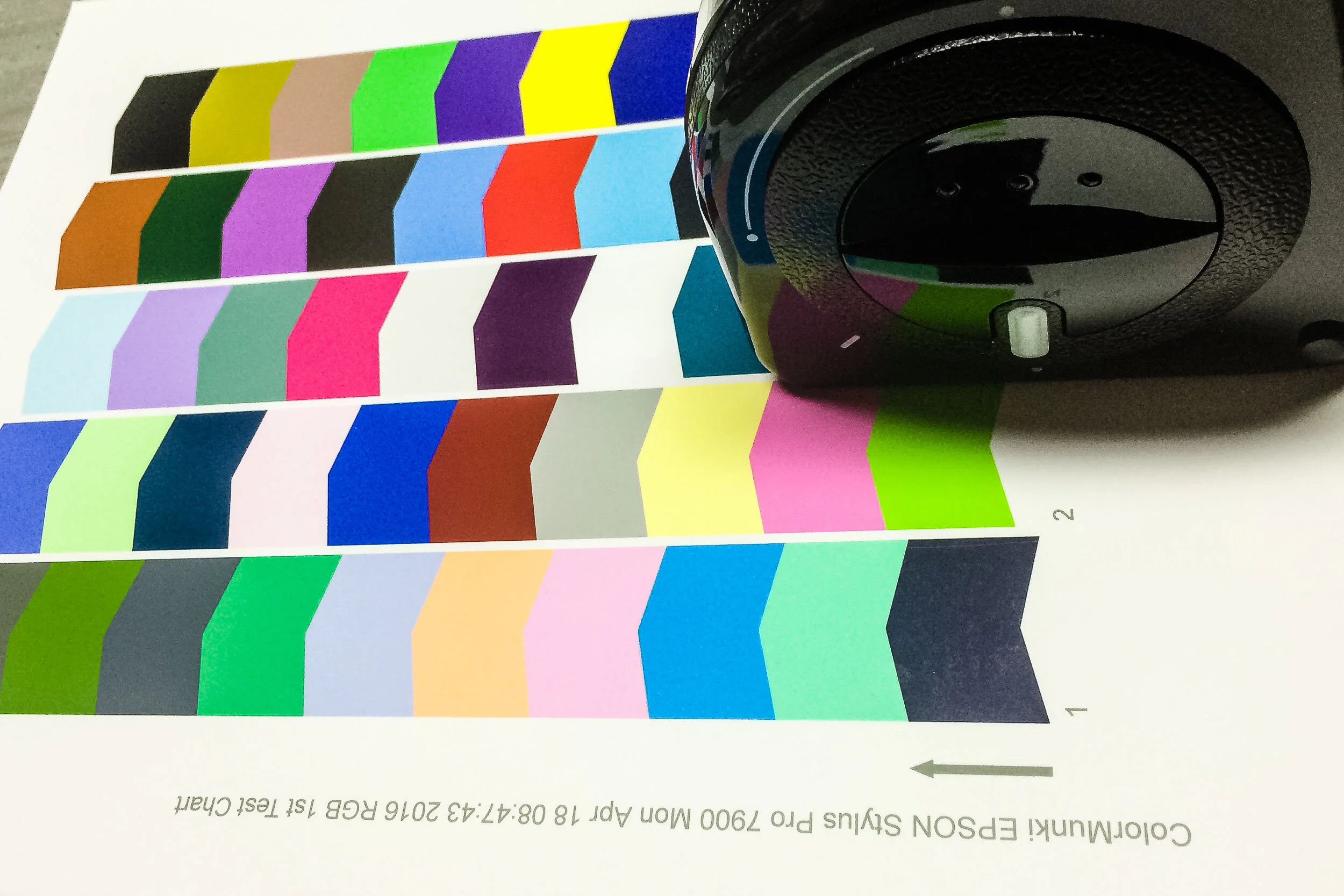Color Calibration
Seeking Consistent Color
One extremely important goal of mine has always been to consistently produce high quality, natural color fine art landscape prints.
To reach this goal, I use top-of-the-line camera and lenses, professional Epson Sure Color 7570 printer, (previously the Epson Stylus Pro 7900), and 100% cotton rag archival paper. (Paper was Breathing Color Pura Smooth with the 7900. It is Red River Palo Dura Smooth with the P7570).
Equally important, I also incorporate color management from image capture to the final print. The colors I see on my monitor must be consistently produced on the final print.
Enjoying The Performance
Imagine going to a concert of your favorite performer.
You have high expectations of a great performance, filled with great music, instruments in tune, singers all on key. Your expectation is based on your past appreciation of the artist’s work.
What might the results be if the musicians tuned without a central reference?
Calibrating The Monitor
Color management is as important to my work flow as tuned instruments are to the professional performer.
In my own color managed work flow, all images are captured in-camera using Canon’s Camera Raw with Adobe RGB color space, essentially taking in the full colors of the given scene.
Once imported into my computer, all images are viewed and processed on my wide-gamut Eizo monitor (previously a NEC PAW monitor).
This monitor provides my “eyes” into the images, capable of seeing colors beyond what is typically available on the consumer monitors.
To ensure I’m viewing the most accurate colors, I now use the color calibration unit built into the Eizo monitor.
When I was using the NEC monitor, I would use the X-rite i1Studio color calibration system, which included a spectrophotometer and software.
The calibration system, both the previous unit and now with EIzo, effectively create a reference point for all colors displayed on my monitor, and re-calibrates to that reference point at a timed interval maintained by the monitor.
Profiling The Printer
Equally important to the monitor calibration is using a printer profile.
With both the monitor and printer profiled, each controls how the colors will appear in the final print, on that specific paper, using that specific printer.
As you may have read, I print all fine art prints myself, using my own Epson Sure Color 7570 large format printer, previously the Epson 7900.
With the 7900, I was using Breathing Color Pura Smooth cotton rag paper, and created by own icc profile files using the i1Studio spectrophotometer and software.
Now using the 7570 printer, I switched to the Red River Dura Palo cotton rag paper, and found their supplied profiles work very well.
As such, I no longer create my own printer profiles.
I should add, I print everything directly from Lightroom, with the printer settings using the paper profile that to match the paper I am printing with.
The Results
Consistently high quality, natural color images, each and every time.
